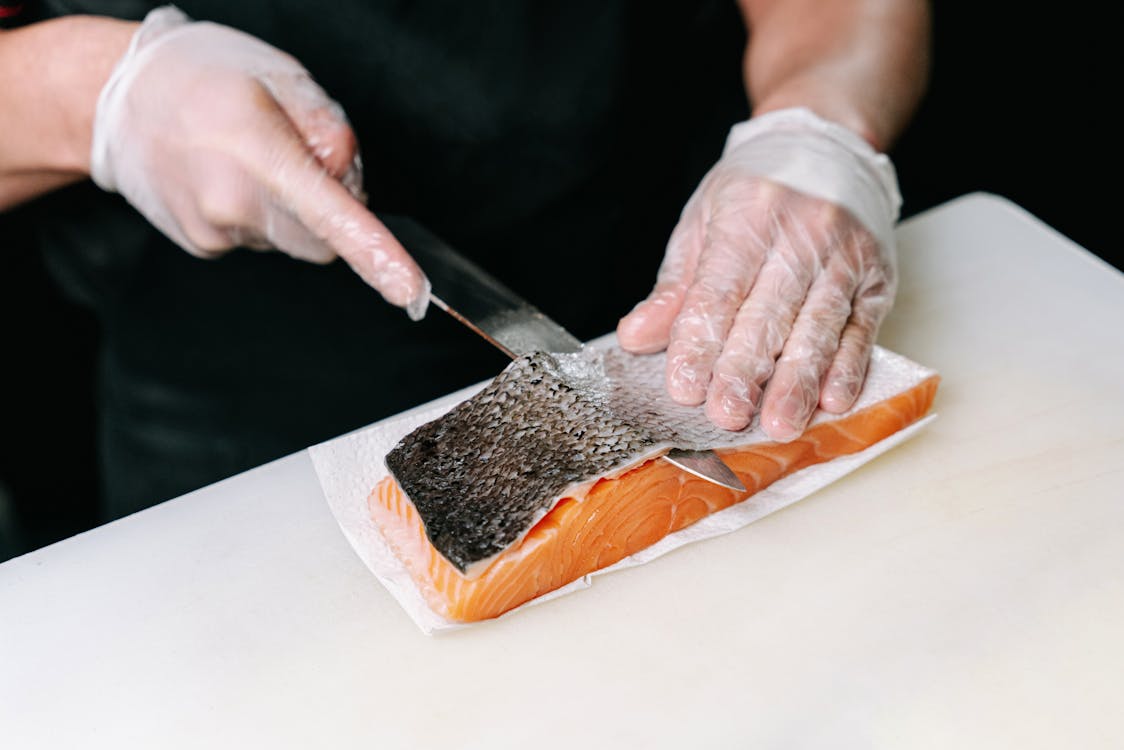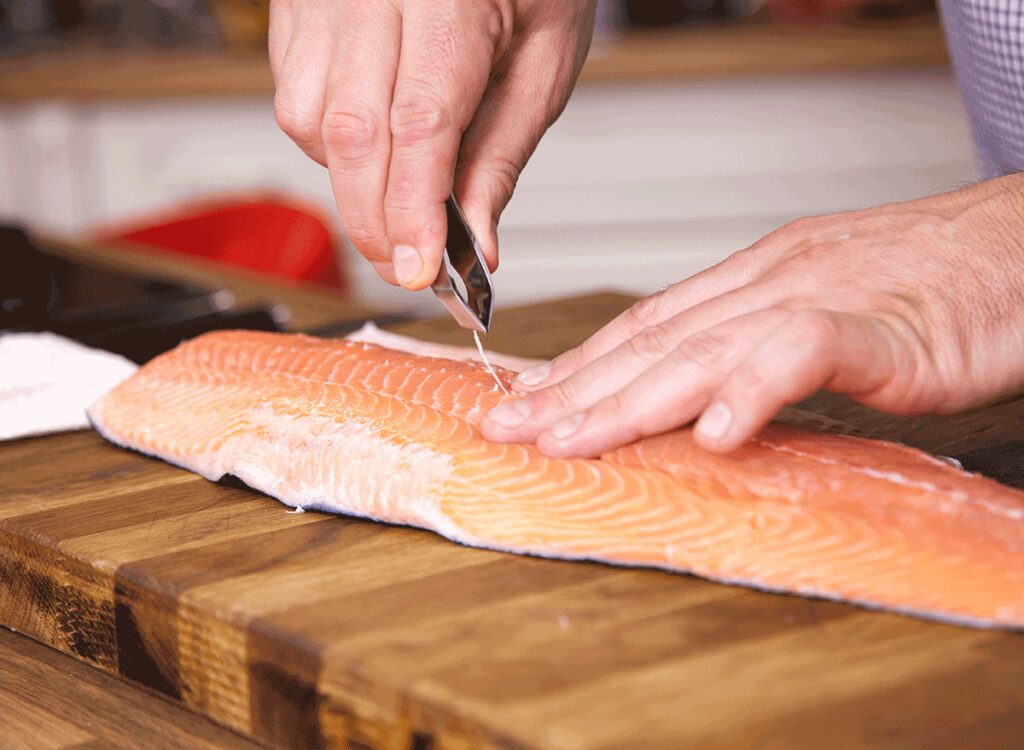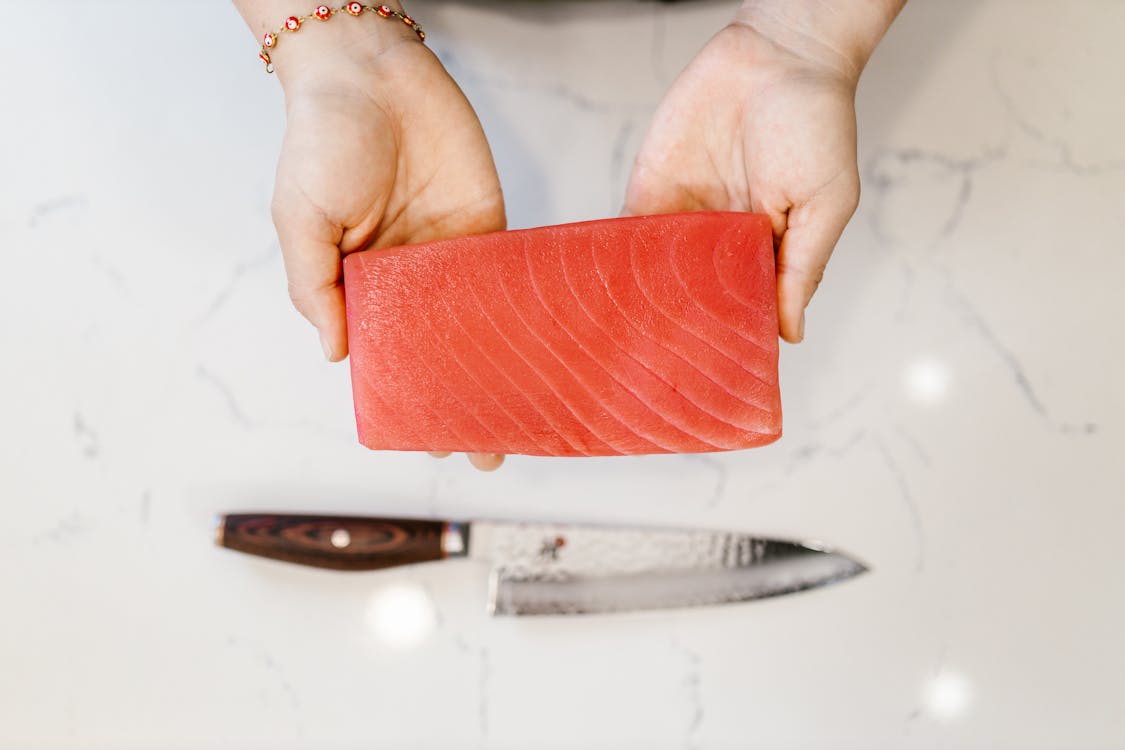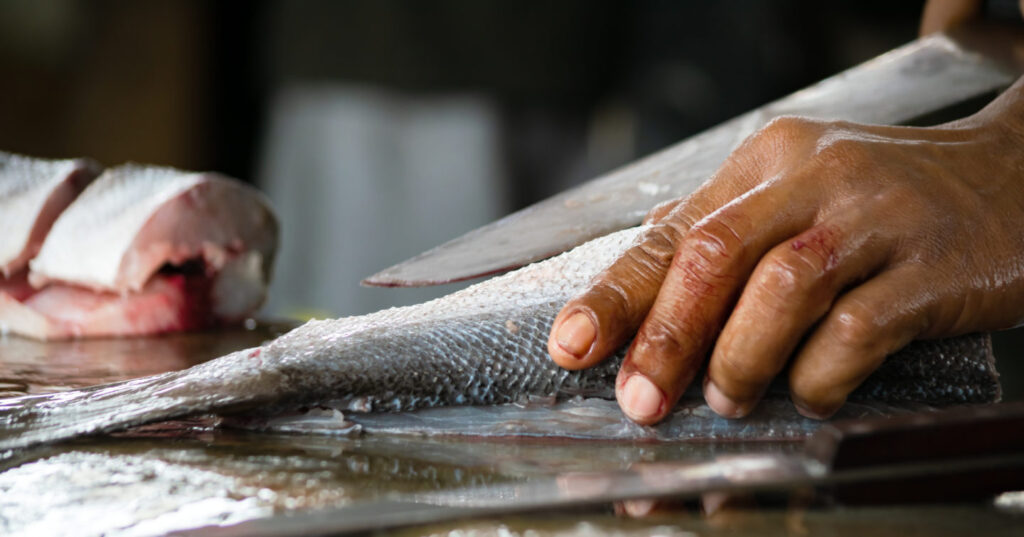Fish knives are a type of cutlery specifically designed primarily for filleting and deboning fish.. These knives are characterized by their thin, flexible blades, which allow them to easily maneuver around the bones and delicate flesh of fish. Fish knives can be used for a variety of tasks, including removing the skin, separating the flesh from the bones, and preparing sashimi or sushi. If you are looking for a top quality fish knife, you can check a wide range of options of Knife subscription box. However, it is highly important to know the difference between them and how to use them. In that way, you will be able to select the ideal one.
Types of Fish Knives

src: pexels.com
There are several types of fish knives to choose from, each with its own unique features and benefits. The most common types of fish knives include the fillet knife, the boning knife, and the sashimi knife.
Fillet knives are long and thin, with a flexible blade that is perfect for removing the skin and filleting small to medium-sized fish. These knives are typically between 6 and 8 inches in length and have a pointed tip for precision cutting.
Boning knives, as the name suggests, are designed for removing bones from fish. They have a shorter, more rigid blade than fillet knives, which allows them to easily separate the bones from the flesh. Boning knives are typically between 4 and 6 inches in length and have a sharp, pointed tip.
Sashimi knives, also known as hankotsu knives, are specifically designed for preparing sashimi and sushi. These knives have a thick, rigid blade that is ideal for thinly slicing raw fish. Sashimi knives are typically longer than fillet and boning knives, with a blade length of 8 to 10 inches.
In addition to the fillet, boning, and sashimi knive, there are a few other types of fish knives that are worth knowing about. One type of fish knife is the fish spatula, which is a flat, flexible blade with a beveled edge. These knives are useful for flipping and turning fish during cooking, as well as for scooping up small pieces of fish or other ingredients. Fish spatulas are typically made of stainless steel or silicone, and have a long handle to keep the user’s hand away from heat.
Another type of fish knife is the fish scaler, which is a tool used for removing the scales from fish. Fish scalers come in a variety of shapes and sizes, from small handheld tools to larger, electric scalers. To use a fish scaler, hold the fish with the head facing away from you and scrape the scaler along the body of the fish, starting at the tail and moving towards the head. Be sure to apply enough pressure to remove the scales, but not so much that you damage the flesh.
Fish tweezers, also known as fish pliers, are another useful tool for handling small pieces of fish. These tweezers have long, thin jaws that are perfect for picking up and manipulating small pieces of fish, such as those used in sushi or sashimi. Fish tweezers are also useful for removing bones or other small debris from fish fillets.
How to use a Fish Knife?

src: pexels.com
When using a fish knife, it is important to hold it correctly to ensure precision and control. To hold a fillet or boning knife, grip the handle with your index finger on the top of the handle and your thumb on the bottom. This will give you the most control over the blade and allow you to easily guide it through the fish.
Filleting a fish
To fillet a fish, start by placing it on a cutting board with the head towards you. Using a fillet knife, make a shallow cut along the back of the fish, just above the spine. Then, using a sawing motion, carefully cut along the spine, following the natural curvature of the bones. Once you reach the tail, cut through the flesh and remove the fillet. Repeat on the other side to remove the second fillet.
Deboning a fish

Source: twinstripe.com
To debone a fish, start by cutting through the flesh to expose the bones. Then, using a boning knife, carefully cut around the bones, following their natural curvature. Once the bones have been removed, slice the fish into desired thickness for sashimi or sushi.
Slicing fish
To slice sashimi or sushi, use a sashimi knife to thinly slice the fish against the grain. Sashimi knives are sharp and can easily slice through raw fish, so be sure to handle them with care.
Other usage
In addition to filleting and deboning, fish knives can also be used for a variety of other tasks, such as trimming and shaping fish for cooking or preparing small, delicate cuts of fish for appetizers or canapes.
How you take care of your Fish Knife?

src: pexels.com
When it comes to caring for your fish knives, it is important to keep them sharp and clean. To sharpen a fish knife, use a sharpening stone or rod to gently hone the blade. Avoid using a steel rod, as this can damage the blade. To clean a fish knife, simply rinse it under cold water and dry it thoroughly with a cloth or paper towel. Avoid using detergent or soaking the knife in water, as this can dull the blade and damage the handle.
How to select the right Fish Knife for your needs?
When it comes to selecting a fish knife, it’s important to choose one that suit your needs and experience the most. Let’s see couple of things that you should pay attention to.
The material of the knife
The knife should be made of high-quality materials and is appropriate for the task at hand. Fish knives are typically made of stainless steel or high carbon steel, with a sharp, pointed tip and a comfortable handle. Some fish knives also have a serrated edge, which can be useful for cutting through tougher skin or bones.
Size and shape of the knife

Source: imd.org
It’s also important to consider the size and shape of the knife when selecting one for your needs. For example, if you’re planning to fillet larger fish, you’ll want a knife with a longer, more flexible blade. On the other hand, if you’re working with smaller fish or preparing sushi, a shorter, more rigid blade may be more suitable.
Handling
In addition to the type and size of the knife, it’s important to consider the handle as well. Fish knives with ergonomic handles are more comfortable to hold and can help reduce hand fatigue during long periods of use. Some fish knives also have a non-slip grip, which can be helpful for wet or slippery conditions.
Conclusion
In summary, fish knives are an essential tool for preparing and handling fish. From filleting and deboning to slicing and scaling, there is a fish knife for every task. By selecting the right knife for the job and taking good care of it, you can ensure that your fish knives will last for years to come.





